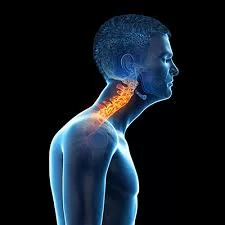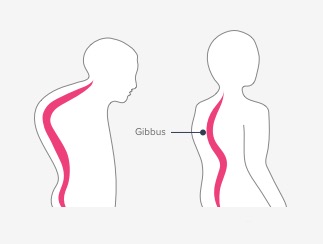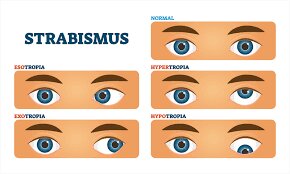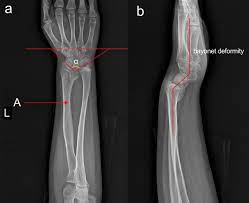How to fix Anterior Pelvic Tilt?
Fixing anterior pelvic tilt involves a combination of exercises, stretches, and posture adjustments. Anterior pelvic tilt is a condition where the pelvis tilts forward, causing an exaggerated curve in the lower back and potentially leading to back pain and other issues.
Table of Contents
Introduction:
A pelvis that is tilted or rotated forward is referred to clinically as having an anterior pelvic tilt.
It typically occurs when the hamstrings and glutes aren’t strong enough to oppose the tight hip flexors forcing your pelvis downward. According to a study, wearing high heels frequently and spending a lot of time sitting down can both result in short, tight hip flexors. It can also result from weak glutes, hamstrings, and core muscles.
The lower back’s lordosis, or curvature, is made worse by APT. It could feel as though your hip flexors are tight.
If you don’t get your anterior pelvic tilt corrected, it could have some long-term effects on the lower back, typically in the lowest two levels—L4-5 and L5-S1.
What is anterior pelvic tilt?
A pelvis should be between 7 and 10 degrees tilted when it is neutral. Your lordotic curve, or the little bend of your lumbar spine, is a result of the neutral pelvic angle. We appreciate seeing that curve because it’s healthy.
However, if the tilt is greater than 10 degrees, it can be diagnosed as an anterior pelvic tilt or rotated pelvis.
In other words, an anterior pelvic tilt is a pelvic misalignment that causes your pelvis’ front to rotate forward and its back to rise. Your posture may start to shift when the angle increases in severity or tilts, which can lead to problems with stability, mobility, and occasionally loss of balance.
There are three different types of pelvic tilt, but an anterior tilt seems to be the most typical. Due to the highly common cause of tight hip flexor muscles, anterior pelvic tilt seems to be more prevalent than posterior or lateral pelvic tilt.
If you are aware of the numerous problems that tight hip flexors may create, you probably won’t be shocked to find that your twisted pelvis may also be caused by tight muscles. That’s because your leg’s forward motion or hip flexion is caused by these muscles. Long periods of time spent sitting, muscular imbalances, and demanding activity can all cause tight hip flexors.
Anterior Pelvic Tilt (APT) Anatomy:
A number of muscles that surround the pelvic region are virtually always activated while we exercise. These abdominal muscles are stretched as a result of the lordotic curves brought on by the pelvic tilt from APT. Over time, the person’s core muscles become weak as a result of their postural condition. More particularly, it has an impact on the obliques and transverse abdominals.
The same issue will also affect other muscles including the glutes and hamstrings. There is less muscular tension present when these muscle groups are stretched out like way. As a result, this condition frequently has lax muscles as a cause as well as an outcome.
The iliacus and psoas are the two muscles that make up your hip flexors. These muscles attach to one another on your lower back and the top of your femur. The iliopsoas muscles are frequently referred to as a group since they are interconnected and overlap one another.
The iliopsoas muscles are situated in such a way that when they are tense. They will start to pull the pelvis forward if you let them stay tight, reducing the space between your pelvic bone and femur.
This may result in discomfort, stride shortening, a restricted range of motion, and an obvious anterior pelvic tilt. The muscles in your pelvic region are put under more tension when your pelvis changes farther, which may lead to even more apparent muscle tightness.
A frequent postural deviation known as anterior pelvic tilt (APT) is defined by an abnormal forward rotation of the pelvis. The movement patterns, musculoskeletal imbalances, and injury risk may all be affected by this position.
APT is described as a forward tilt of the pelvis that causes the abdomen to protrude and increases the lordosis of the lumbar spine. Numerous things, such as tight hip flexors, weak gluteal muscles, and bad postural habits, might contribute to it. APT can be exacerbated in certain people by structural variations in the pelvis, such as acetabular retroversion.
Causes:
Your health may be harmed by anterior and posterior tilts.
Typical pelvic tilt triggers include:
- A sedentary way of life
- Spending too much time seated at work, in front of the TV, or while travelling
- Long stretches of time in a relaxed stance
- Bad posture
Due to extended sedentary activity, a lot of people experience pelvic tilt. Sitting for extended periods of time can cause pelvic tilt and other posture problems.
Impacts on health due to APT:
Through a mechanism known as reciprocal inhibition, nearby muscles will adjust to the pelvic postural deficit. These modifications may result in a cascade of postural disorders and associated health issues, including:
- Backache: The pelvic muscles’ ability to pull on your spine is altered by an anterior or posterior pelvic tilt, which makes your lower back bend too far inward or outward. Your spine is put under abnormal pressure by this bend. You might consequently feel lower back pain and discomfort as a result.
- Hamstrings that are too long: Your hamstrings must work harder because your gluteus muscles are weakened by an anterior pelvic tilt, which makes them contract. A hamstring sprain can result from tight hamstrings. This uncomfortable ailment develops as a result of strained muscles.
- Stomach swell: Your stomach will protrude forward as a result of an anterior pelvic tilt, gradually weakening your abdominal muscles. Additionally, your stomach may seem larger.
- Your level of fitness may decline due to weakened muscles brought on by pelvic tilt. They might also encourage bad posture when exercising, which could result in harm.
Signs and symptoms:
- Femoral acetabular impingement: This condition develops as a result of repeated use, which hurts when you move your hip due to injury to the ball of the femoral socket.
- A lower back ache: Between your ribcage and your pelvis, your back may ache, hurt, or feel stabbed. When engaging in demanding activities like exercising or lifting large objects, these pains may manifest more frequently.
- Sacroiliac joint pain: Sacroiliac joints in the lower back. When these joints are inflamed, you may experience lower back discomfort that radiates to your buttocks, groin, thighs, and upper back.
- Pelvic tilt can occasionally result in generalized groin pain.
Consult a doctor for treatment if your back or joints start to hurt suddenly or severely.
Diagnosis:
Several techniques can be used by medical professionals to diagnose pelvic tilt.
Visual analysis is one popular method. The patient stands comfortably throughout this assessment as a clinician visually scans them from the side. To gauge the amount of pelvic tilt, the doctor will draw an illustrative line between the anterior and posterior superior iliac spines. However, no research has examined the precision of ocular analysis of pelvic tilt.
Other pelvic tilt diagnostic methods include:
- An instrument that uses calipers to assess the pelvic slope angle
- A portable inclinometer.
- Radiographic examination
- A smartphone app that performs inclinometer-like measurements
- The most accurate methods for measuring pelvic tilt at the moment are inclinometers and smartphone apps. When preparing for procedures to correct pelvic tilt, physicians sometimes employ radiographic imaging.
- Numerous clinical tests, such as the Thomas test and the pelvic tilt test, can be used to evaluate APT.
Treatment:
Awareness: The first step in addressing anterior pelvic tilt is to become aware of your posture. Stand in front of a mirror or have someone take a picture of your side profile to assess the tilt. Common signs include a protruding abdomen and an arched lower back.
Posture Correction: Be mindful of your posture throughout the day. When standing or sitting, engage your core muscles and tuck your pelvis slightly under to maintain a more neutral pelvic position.
Exercise Regularly: Incorporate a well-rounded exercise routine that includes cardiovascular activity, strength training, and flexibility exercises to promote overall body balance.
Seek Professional Help: If you’re unsure about your posture or the severity of your anterior pelvic tilt, consider consulting a physical therapist or a professional trainer. They can provide personalized guidance and exercises tailored to your specific needs.
Consistency: Correcting anterior pelvic tilt takes time and consistent effort. Be patient and stay committed to your posture-improvement routine.
Using a range of stretches and strengthening exercises, the pelvis can be progressively brought back to a neutral position in situations of anterior pelvic tilt.
Stretching and strengthening activities are frequently used in the management of APT to address musculoskeletal imbalances and enhance posture.
To improve function and lessen symptoms in people with structural abnormalities, targeted therapies may also be required.
How Can Anterior Pelvic Tilt Be Fixed?
It’s crucial to rectify the muscle imbalance by both releasing/stretching the constricted muscles and strengthening the weakening muscles in order to repair an anterior pelvic tilt. Let’s look at the muscles we will be working on.
Hip flexors (psoas, tensor fascia latae, iliacus, and rectus femoris) are among the muscles that are tense.
- Back extensors (latissimus dorsi, quadratus lumborum, multifidus, and erector spinae)
Core muscles (rectus abdominus, internal and external obliques, and transverse abdominus) are among the muscles that are weak. - The muscles of the gluteus (gluteus maximus, medius, and minimus)
Stretching Exercise
Stretching the hip flexors while knee flex
With anterior pelvic tilt, the hip flexors are frequently contracted, and this exercise helps to lengthen them
How to perform it:
Kneel on a soft surface to start this stretch.
- Bring your right leg forward, keeping it flat on the floor so that your knee is above your ankle.
- Keep your left knee bent at 90 degrees and in touch with the cushioned floor.
- While keeping your core tight, slowly advance your right foot a few inches.
- Move your hips forward while contracting your right gluteal muscles.
- Right now, your left knee should be slightly bent past 90 degrees.
- For 10 seconds, maintain the final position.
- Perform this stretch on both sides and aim for 10 repetitions.
- Child’s Pose
The anterior pelvic tilt normally causes the Latissimus dorsi, a back muscle, to become tight. This stretch relieves it.
How to execute:

- Start with getting down on your hands and knees, a little wider than a hip distance between your knees.
- Bend your knees while pushing your hips backwards and touching your toes together.
- Once you’re calm, straighten your arms in front of you and let your head fall forward into a comfortable position.
- Keep your body in this position for 15–20 seconds.
- Retrace your steps to the beginning point.
- Try to perform 3 times.
2. The “Cow & Cat Stretch”
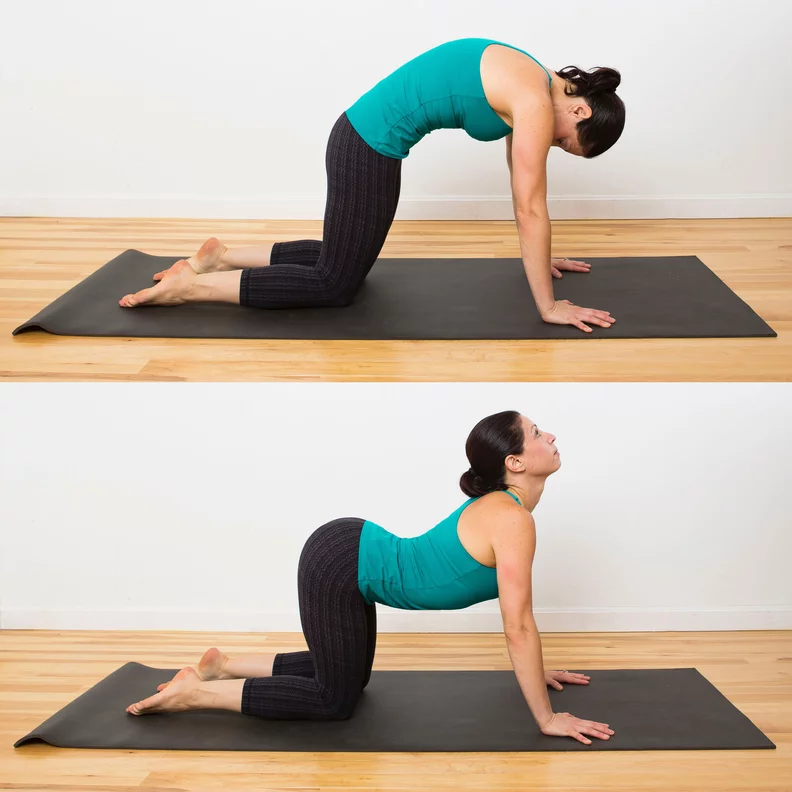
This stretch aids in loosening up the tense Erector Spinae muscles in the back that are brought on by anterior pelvic tilt.
How to start:
- Get down on your hands and knees to start this stretch.
- Take a deep breath in, allowing your stomach to “drop” toward the floor while you raise your gaze to the ceiling.
- Exhale and slowly round your spine, pressing your hands into the ground and bending your neck slightly to stare at your feet.
- Try to complete this stretch 5 times.
3. Warrior 2 Pose
This position expands the hips, especially the TFL muscle, and assists in strengthening the leg
How to execute it:
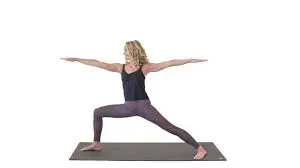
- Starting in the Five Pointed Star position, flex your right knee over your right ankle while pointing your right toes toward the wall to your right.
- Reach out toward the side walls while rotating your hips and shoulders toward the front.
- Turn and gaze at the middle finger on your right hand.
- Strengthen your legs and press onto your feet.
- To help stretch your spine, lower your hips toward the floor and reach for the top of the head.
- Press your chest upward while letting your shoulders drop and back.
- Keep your body in this position for up to 60 seconds.
- Bring your feet forward as you slowly straighten your legs, returning to the five-pointed star position.
4. Knee to chest twice
By stretching the muscles (Spine extensors) that are frequently contracted in people with anterior pelvic tilt, stretch helps to release tension in the lower back.
- Start by lying on your back on a mat with your knees bent and your feet flat on the ground.
- Place your right hand behind your right knee, slowly bring your right knee to your chest, and then gently bring your left knee to your chest.
- Keep your body in this position for 15–20 seconds.
- Unwind and gradually return to the beginning posture with each leg.
- Try to complete this stretch three times.
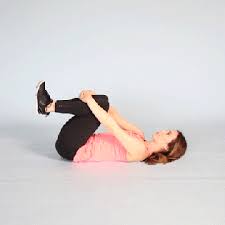
STRENGTHENING EXERCISE
- Plank
Your deep core and gluteal muscles will both benefit from this exercise.
Start by lying on your stomach with your forearms pressed firmly against the mat.
- Squeeze your abdominal muscles and lift your body till your forearms and toes are resting.
- Make sure your spine is in a neutral spinal position (low back should not droop or butt should not be raised in the air).
- Plank for 20–30 seconds, then drop yourself to the ground.
- This exercise should be performed two to five times.
Pay attention to maintaining a straight back during the entire exercise.
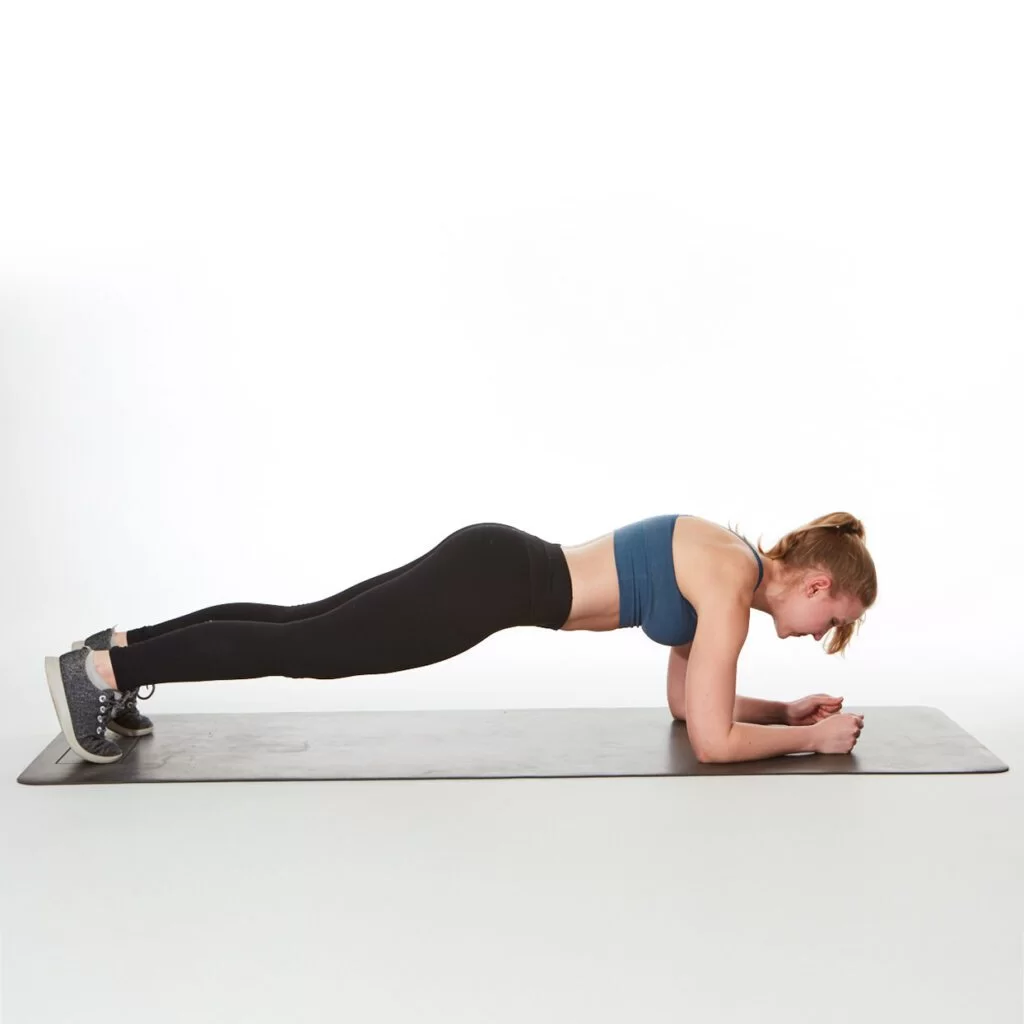
2. Glute Bridge
You can strengthen your back, gluteal, and core muscles with the help of this workout.
How to execute:
Laying on your back with your knees bent and your feet flat on the ground, your arms should be next to your torso when you start.
- Before making any movement, tighten your butt and brace your core.
- Lift your butt off the ground while bracing and keep squeezing it.
- After five seconds, hold this position and slowly revert to the initial position.
- Try to perform 10 times.
When performing this movement, avoid overextending; instead, focus on engaging your glutes.
3. Squatting
This all-encompassing exercise benefits your back, hamstrings, gluteals, and other muscles.
How to execute:
- Place your feet about shoulder width apart when you first stand.
- Brace your core while maintaining a forward gaze.
- Maintaining abdominal tension, bend your knees to about a 90-degree angle while hinging at the hips (as if you were sitting).
- Use your legs to lift yourself up, and then your glutes (squeezing your butt) to finish the motion. – Attempt 10–15 repetitions.
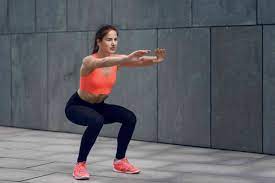
- Dead Bug
This exercise serves to strengthen your deep core and to stabilize your hips and trunk.
How to execute:
Start by laying on your back with your arms outstretched toward the ceiling.
- 90 degrees above the ground, extend your legs
- As you exhale, lower your ribcage to the floor while turning your pelvis upward and tightening your abdominal muscles (this is the starting position for this exercise, which you must maintain throughout the action).
- Don’t let your lower back arch as you extend your left leg, straighten it at the hip and knee, and lower it to the floor just above it. At the same moment, lower your right arm back to the floor just above it to begin the exercise.
- Return your left leg and right arm to the starting position while maintaining a strong core and glutes.
- Repeat with your left arm and right leg. twenty times, switching sides.
5. Bird dog
How to execute:
- Begin on your hands and knees, placing your hands beneath your shoulders and your knees beneath your hips.
- Brace (contract) your core as firmly as you can before beginning any motion.
- Engaging your core, lift your left arm and extend it forward until it is parallel to your body. Kick your right leg backwards such that it is parallel to your torso at the same moment.
- It’s important to keep your lower back from arching when doing this.
- Hold this posture for two to three seconds before gradually returning to your starting position.
- The same goes for your left leg and right arm
- 10 times on each side in alternation
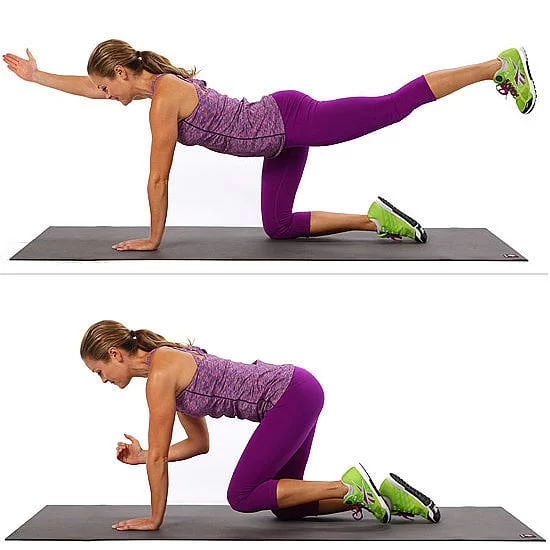
Summary:
Similar to the majority of medical disorders, APT has several severity levels. Some variations of the illness result in pain and may affect the patient’s functioning capacity. On the other hand, there are some situations when simple exercise modifications are sufficient for treatment.
APT is a treatable condition, although some individuals might have to put in more effort than others to get back to normal. The level of difficulty will ultimately rely on the patient’s objectives, level of skill, and degree of postural disturbance. The majority of treatments for this issue centre on t-spine extension, self-myofascial techniques, and other stretches and exercises that build strength. Together, all of these components support the patient’s return to normalcy.
While standing, some individuals only have mild effects from APT, whilst others experience lumbar lordosis all the time. The latter condition is obviously more dangerous because the patient’s pelvis is always tipped forward, regardless of what they are doing. It makes no difference whether he or she is standing, sitting, or engaged in any other activity. These are the clients who require the greatest attention when it comes to APT correction.
Your pelvis may be rotated or tilted forward if you have anterior pelvic tilt. According to research, 85% of males and 75% of women are affected. Numerous health issues might result from this bad posture.
FAQs:
Abnormal pelvic tilt may affect speed, step length, and stride length since it is linked to balance and trunk control, both of which are crucial for proper gait. Additionally, variations in pelvic displacement, gait speed, and step count are linked
You likely have an anterior pelvic tilt (APT) if you’ve ever been informed that your butt protrudes or that your stomach hangs out. You can raise your APT by performing specialized activities.
Use the same pants and belt test you used to determine whether you had a posterior pelvic tilt to assess your posture to determine whether you had an anterior pelvic tilt. This time, an anterior pelvic tilt is present if the belt buckle, as seen from the side, is lower than the belt’s back.
When the front of the pelvis moves forward and the back of the pelvis rises, a shift in posture known as an anterior pelvic tilt results.
Others could need a longer time, but other people might start to correct anterior pelvic tilt within a few weeks. It could take a little longer to correct if, for instance, your pelvis has been tipped forward for a long time. But if you persist with exercises like those mentioned above, you’ll start to see results.



